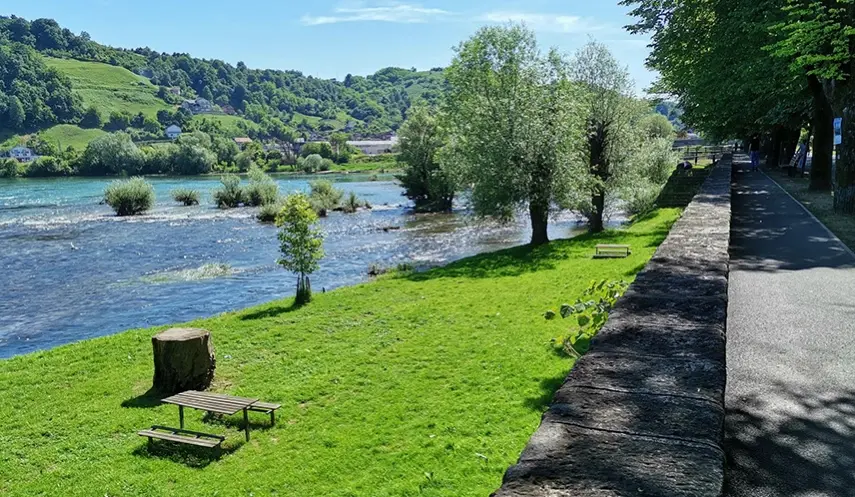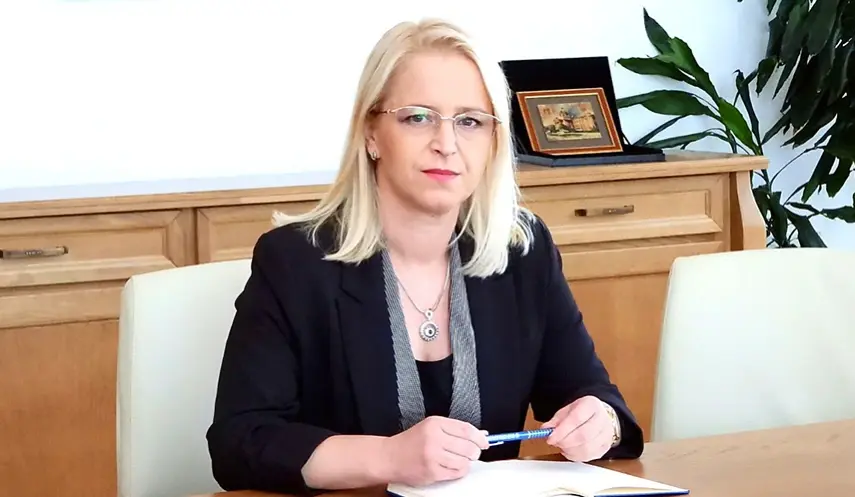NOVI GRAD ATTRACTS MORE AND MORE TOURISTS, ESPECIALLY IN SUMMER
Republika Srpska - Novi Grad - tourism /9/
09/07/2025
10:00

NOVI GRAD, SEPTEMBER 7 /SRNA/ - Novi Grad, in the northwest of Republika Srpska, at the confluence of the Sana and Una rivers, at an altitude of about 220 meters above sea level, is interesting to visitors throughout the year, and especially in the summer when numerous cultural, sports and entertainment events are organized in this local community.
Every year, on the occasion of the Municipality Day - St. Peter's Day, around 30 events are organized in Novi Grad, which together are called St. Peter's Days.
From mid-June to the end of July, locals and everyone who visits this local community have the opportunity to learn about culture, tradition, sports activities, and traditional cuisine.
The largest number of participants is gathered by the Una Regatta boat race down the Una, on the last Saturday in July, when more than 800 people from the region are on the Una River.
This gathering at the Krajina beauty is becoming a tradition and attracts more and more tourists every year.
The Una River was named after the ancient Romans, who, upon first seeing its picturesque beauty and hearing the murmur of its waterfalls, said "una", which means one, the only one.
Una is an inexhaustible inspiration for painters, poets, and musicians who have immortalized her beauty in paintings, verses, and songs.
Of the total 207 kilometers of the Una, 35 kilometers flow through Novi Grad as a border river with Croatia.
Una is characterized by its picturesque beauty, the emerald green color of its water, the large number of tufa rocks, and the murmur of its waterfalls, complemented by untouched nature.
Every year, the beaches along the Una River are full of people, and a special attraction is the city beach called Ada.
The Una boat is inextricably linked to Novi Grad, although there is no written record of when it began to be used on the Una River, and oral tradition says more than 200 years ago.
Although it once had a commercial purpose, today the Una Boat transports everyone who wants to peacefully enjoy the beauty of the river and the nature that surrounds it.
The first marathon in BiH was organized in Novi Grad in 2013, when the Sloboda Athletic Club organized a race from Hašani, the birthplace of the writer Branko Ćopić in the municipality of Krupa na Uni, to Novi Grad, with a length of 42.2 kilometers.
The marathon route mostly runs through natural landscapes.
Novi Grad is the host of the Rakani Art Colony, which was launched in 1985, where artists seek inspiration by the Una River in early August, and the works remain in the art collection.
Novi Grad has potential for hunting and fishing, with 37 species of fish living in the waterways of this local community, which was documented by a study of all waterways in the area of this local community.
Rural tourism in the area of the municipality has potential that has not yet been sufficiently exploited.
The Agrojapra Agricultural Cooperative and several rural households are trying to include this type of tourism in the overall tourist offer.
One of Novi Grad's biggest attractions is the famous city quay, a three-kilometer-long stone-walled coastal fortress with an alley of shady chestnut trees and fragrant linden trees.
It was built in several phases; the main works were started by the city administration during the Austro-Hungarian period from 1903 to 1906, and continued by the royal government from 1934 to 1937.
The remaining space with a slightly elevated bank was added by the then authorities after the major floods of 1954 and 1955, and the upstream Vidorija section was built in after the construction of the hotel in 1985.
The quay is a famous promenade in Novi Grad because you can enjoy the view of the Una River along its entire length.
Visitors will find the Town Hall, built in 1888 in the pseudo-Moorish style, interesting.
In 2006, the Commission for the Preservation of National Monuments adopted a decision declaring the City Hall in Novi Grad a national monument of BiH.
Also of interest is the monument "Partisan Mother", the work of Marijan Kocković, erected in 1964 and representing a composition consisting of a bronze statue of a mother partisan, a 10-meter-long stone relief depicting the course of the National Liberation War, and a granite cube with carved verses from the poem by Skender Kulenović "Stojanka, Knežopoljka Mother".
There are stairs leading to the hill where the monument is located, also suitable for walking.
A 15-kilometer circular trail has been arranged on Novska Planina, and twice a year the Novoska Planina Mountaineering Association organizes a hiking hike.
When it comes to cultural heritage, Novi Grad can boast the legacy of Stojan Ćelić, a national monument of Bosnia and Herzegovina, housed in a gallery and consisting of 41 works.
The Director of the Tourist Organization Nebojša Todić said that people are most attracted to Novi Grad by the Una River, especially in the summer, and that this tourist potential is being promoted to the maximum.
Todić pointed out that the number of arrivals and overnight stays is increasing year after year.
He stated that 1,200 arrivals were reported in the first seven months of this year, while in reality the number is far higher.
Todić added that there are more than 200 beds available in Novi Grad, and about 40 percent of the accommodation capacity is in holiday homes along the Una River.
The Novi Grad Tourist Organization, in cooperation with the Tourist Organization of Republika Srpska, has created a thematic trail "One and Only" about the beauties of the Una River and the tourist potential of the Novi Grad municipality.
Along the quay, next to the Una River, nine information boards have been placed for domestic and foreign tourists with information about the history of Novi Grad, the quay, the tufa, the Una and its flora and fauna, the Una boat, the former fortress, the mills on the Una and the Town Hall.
Novi Grad was first mentioned in documents in 1217, although historians tend to believe that the city was founded in 1280.
The wider area of the city was inhabited in ancient times, as evidenced by archaeological sites in the village of Donji Rakani and in the valley of the Japra River.
The first settlement could not have been established in today's urban area because it was exposed to flooding by the Una and Sana rivers.
The city initially emerged from two sub-cities, Podnovi and Ustisana, under Kulinsko Hill, on which stood the acropolis-type Kaštel fortress of the Babonjić princes, for monitoring river and road traffic in the Una and Sana valleys.
At this picnic spot, at the place where Zoran Radmilović, a giant of the Yugoslav acting scene, played his last film scene in Novi Grad in 1985, a bench with his image was installed last year. /to be continued/

DODIK: SPECIAL STATUS FOR HOME EMPLOYEES, BAM 100,000 FOR FURNITURE REPLACEMENT

DODIK: SDS AND PDP REPRESENTATIVES IN CEC CONFIRMED THAT APPEALS ARE UNFOUNDED

NOVAKOVIĆ BURSAĆ: TWO SERB CAUCUS DELEGATES ARE UNDERMINING CAPACITY OF SERB PEOPLE AT BiH LEVEL




